When shopping for shooting glasses, most people focus on factors such as the level of impact protection, amount of eye coverage, lens colors, etc. One aspect that is often overlooked in shooting glasses is UV protection.
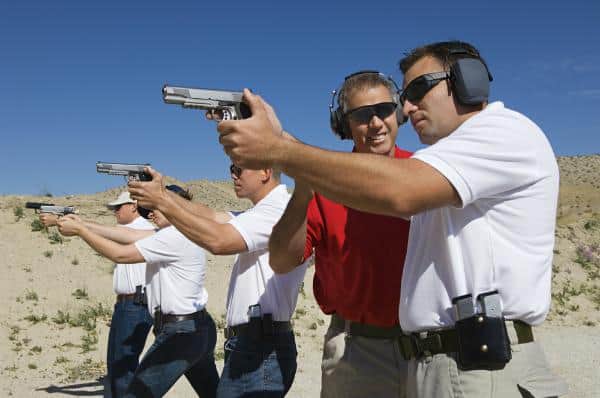
Most shoppers seem to think that UV protection is a given with shooting glasses, but that’s not always the case. While the impact protection of shooting glasses is certainly a major component, I wouldn’t recommend that you lose sight of the need for UV protection as well (no pun intended).
Here’s an interesting article that was written by the EPA about the effects of UV rays on the body and the eyes. It’s absolutely worth a read:
“The Sun, UV, and You – A Guide to SunWise Behavior”
The original article can be seen here: https://www.epa.gov/sites/production/files/documents/sunuvu.pdf
“While some exposure to sunlight is enjoyable, too much can be dangerous and cause immediate effects like blistering sunburns and long-term problems like skin cancer and cataracts. Overexposure also causes wrinkling and aging of the skin. Scientists are concerned that ultraviolet (UV) radiation might even impair the human immune system.
UV Radiation
The sun gives out energy over a broad spectrum of wavelengths. UV radiation, which has a shorter wavelength than either visible blue or violet light, is responsible for sunburn and other adverse health effects. Fortunately for life on earth, stratospheric ozone screens most harmful UV radiation. What gets through the ozone layer, however, can cause the following health problems, particularly for people who spend substantial time outdoors:
- Skin cancer and other skin disorders
- Cataracts and other eye damage
- Immune suppression
Because of these adverse health effects, you should limit your exposure to UV radiation and protect yourself when working, playing, or exercising outdoors.
Types of UV Radiation
Scientists have classified UV radiation into three types:
- UVA
- UVB
- UVC.
The stratospheric ozone layer absorbs some but not all of these types of UV radiation:
UVA – Not absorbed by the ozone layer
UVB – Partially absorbed by the ozone layer
UVC – Completely absorbed by oxygen and ozone in the atmosphere
UVA and especially UVB penetrate into the skin and eyes, and can cause the adverse health effects listed above.
UV Levels Depend on a Number of Factors
Stratospheric Ozone
The ozone layer absorbs most of the sun’s harmful UV rays, but its thickness varies depending on the time of year and changing weather patterns. The ozone layer has thinned in certain areas due to the emission of ozone-depleting chemicals.
Time of Day
The sun is at its highest in the sky around noon. At that time, the sun’s rays have the least distance to travel through the atmosphere, and UVB levels are at their highest. In the early morning and late afternoon, the sun’s rays pass obliquely through the atmosphere, and the intensity of UVB is greatly reduced. UVA levels are not sensitive to ozone and vary throughout the day much like visible sunlight does.
Time of Year
The sun’s angle varies with the seasons, causing the intensity of UV rays to vary. UV intensity tends to be highest during the summer months.
Latitude
The sun’s rays are strongest at the equator where the sun is most directly overhead and where UV rays must travel the least distance through the atmosphere. Ozone also is naturally thinner in the tropics as compared to the mid- and high-latitudes, so there is less ozone to absorb the UV radiation as it passes through the atmosphere. At higher latitudes the sun is lower in the sky, so UV rays must travel a greater distance through ozone-rich portions of the atmosphere and in turn expose those latitudes to less UV radiation.
Altitude
UV intensity increases with altitude because there is less atmosphere to absorb the damaging rays.
Weather Conditions
Cloud cover reduces UV levels, but not completely. Depending on the thickness of the cloud cover, it is possible to burn on a cloudy day even if it does not feel very warm.
Ozone Depletion
The ozone layer forms a thin shield in the stratosphere, protecting life on earth from the sun’s harmful UV rays. In the 1980s, scientists began accumulating evidence that the ozone layer was being depleted. Depletion of the ozone layer can result in increased UV radiation reaching the earth’s surface, which can lead to a greater chance of overexposure to UV radiation and consequent health effects including skin cancer, cataracts, and immune suppression.
How Stratospheric Ozone Protects Us
Ozone is a naturally occurring gas that is found in two layers in the atmosphere. In the layer surrounding the earth’s surface-the Stroposphere-ground-level or “bad” ozone is an air pollutant that damages human health and vegetation and is a key ingredient of urban smog. The troposphere extends up to the stratosphere, which is where the “good” ozone protects life on earth by absorbing some of the sun’s ultraviolet rays. Stratospheric ozone is most concentrated between 6 to 30 miles above the earth’s surface.
Ozone is formed when oxygen molecules absorb UV radiation and split apart into two oxygen atoms (0), which combine with other oxygen molecules (02) to form ozone molecules (03). Ozone also is broken apart as it absorbs UV radiation. In this way, UV radiation helps sustain the natural balance of ozone in the stratosphere, while ozone in turn absorbs UV radiation, protecting life on earth from harmful radiation.
How Ozone Is Depleted
Until recently, chlorofluorocarbons (CFCs) were used widely in industry and elsewhere as refrigerants, insulating foams, and solvents. They migrate into the upper atmosphere after use, carried by air currents into the stratosphere. This process can take as long as 5 to 10 years. These chemicals absorb UV radiation, break apart, and react with ozone, taking one oxygen atom away and forming highly reactive chlorine monoxide. Chlorine monoxide in turn breaks down 03 again
by pulling away from a single oxygen atom, creating two 02 molecules, and allowing the chlorine to move freely to another ozone molecule. In this way, each chlorine atom acts as a catalyst, repeatedly combining with and breaking apart as many as 100,000 ozone molecules during its stratospheric life.
Other compounds also damage the ozone layer in much the same way as do CFCs. These ozone-depleting substances include pesticides such as methyl bromide, halons used in fire extinguishers, and methyl chloroform used in industrial processes.
Effect of Ozone Depletion on UV Radiation Levels
Current studies predict that CFC levels in the atmosphere should peak by around 2000 and should fall to pre-1980 levels by about 2050. As international control measures reduce the release of CFCs and other ozone-depleting substances, natural atmospheric processes will repair the ozone layer. Until that time, we can expect increased levels of UV radiation at the earth’s surface. These increased UV radiation levels can lead to a greater chance of overexposure to UV radiation and consequent health effects.
Health Effects From Overexposure to the Sun
Americans love the sun and spend a great deal of time outside-working, playing, exercising-often in clothing that exposes a lot of skin to the sun. Most people are now aware that too much sun has been linked to skin cancer. However, few know the degree of risk posed by overexposure, and fewer are aware that the risks go beyond skin cancer. Recent medical research has shown that overexposure to the
sun’s UV radiation can contribute to serious health problems. Each year, for example, more than 1 million cases of skin cancer are diagnosed in the United States, and one person dies every hour from melanoma or nonmelanoma skin cancer. This section provides a quick overview of the major problems linked to excess UV exposure: skin cancer (i.e., melanoma, basal cell carcinoma, and squamous cell carcinoma); other skin problems; cataracts and other eye damage; and immune system suppression. Understanding these risks and taking a few sensible precautions described in this article will help you to enjoy the sun while lowering your chances of sun-related health problems later in life.
A Word About Risk
Overexposure to UV radiation poses the risk of serious health effects for everyone, but not everyone is equally at risk. For example, you may be at greater risk of contracting skin cancer if your skin always burns, or burns easily, and if you have blond or red hair, or blue, green, or gray eyes. Other factors indicating an increased risk of skin cancer include a history of blistering sunburns in early childhood, usually from acute sun overexposure; the presence of many moles; or a family history of skin cancer. Also, people who work or otherwise spend a large amount of time outdoors (i.e., chronic exposure to the sun) may be at higher risk of health effects. It’s a good idea to remember that anyone can contract skin cancer and that all people, no matter what skin type, are equally at risk of eye damage.
Melanoma
Melanoma, the most serious form of skin cancer, also is one of the fastest-growing types of cancer in the United States. Many scientists believe there might be a link between childhood sunburns and malignant melanoma later in life. Melanoma cases in this country have more than doubled in the past 2 decades; according to the American
Cancer Society, about 44,200 new cases of melanoma and 7,300 deaths are currently reported each year.
Nonmelanoma Skin Cancers
Unlike melanoma, nonmelanoma skin cancers are rarely fatal. Nevertheless, they should not be taken lightly. Untreated, they can spread and cause more serious health problems. An estimated 1 million Americans will develop nonmelanoma skin cancers this year, while 1,900 will die from the disease.
Actinic Keratoses
These sun-induced skin growths occur on body areas exposed to the sun. The face, hands, forearms, and the “V” of the neck are especially susceptible to this type of blemish. They are premalignant, but if left untreated, actinic keratoses can become malignant. Look for raised, reddish, rough-textured growths. See a dermatologist promptly if you notice these growths.
Premature Aging of the Skin
Chronic exposure to the sun causes changes in the skin called actinic (or solar) degeneration. Over time, the skin becomes thick, wrinkled, and leathery. Since it occurs gradually, often manifesting itself many years after the majority of a person’s exposure to the sun, this condition is often regarded as unavoidable, a normal part of growing older. With proper protection from W radiation, however, premature aging of the skin can be substantially avoided.
Cataracts and Other Eye Damage
Cataracts are a form of eye damage, a loss of transparency in the lens that clouds vision. Left untreated, cataracts can rob people of vision. Research has shown that W radiation increases the likelihood of certain cataracts. Although curable with modern eye surgery, cataracts diminish the eyesight of millions of Americans and necessitate billions of dollars of eye surgery each year. Other kinds of eye damage include: pterygium (tissue growth on the white of the eye that can block vision), skin cancer around the eyes, and degeneration of the macula (the part of the retina near the center, where visual perception is most acute). All of these problems could be lessened with proper eye protection from W radiation.
Immune Suppression
Scientists have found that sunburn can alter the distribution and function of disease-fighting white blood cells in humans for up to 24 hours after exposure to the sun. Repeated exposure to W radiation might cause more long-lasting damage to the body’s immune system. Mild sunburns can suppress immune functions in people of all skin types.
Action Steps for Sun Protection
*Be SunWise
Protecting yourself from overexposure to UV radiation is simple if you take the precautions listed below.
- Limit Time in the Midday Sun as Much as Possible – The sun’s UV rays are strongest between 10 a.m. and 4 p.m. To the extent you can, limit exposure to the sun during these hours.
- Watch for the UV Index – The UV Index provides important information to help you plan your outdoor activities in ways that prevent overexposure to the sun’s rays. Developed by the National Weather Service (NWS) and EPA, the UV Index is issued daily in selected cities across the United States.
- Wear Sunglasses That Block 99 to 100 Percent of UV Radiation – Sunglasses that provide 99 to 100 percent UVA and UVB protection will greatly reduce sun exposure that can lead to cataracts and other eye damage. Check the label when buying sunglasses.
- Wear a Hat – A hat with a wide brim offers good sun protection for your eyes, ears, face, and the back of your neck-areas particularly prone to overexposure to the sun.
- Seek Shade – Staying under cover is one of the best ways to protect yourself from the sun.
- Protect Other Areas of Your Body With Clothing During Prolonged Periods in the Sun. Tightly-woven, loose-fitting, and full-length clothes are best for the protection of exposed skin.
- Always Use a Sunscreen When Outside – A sunscreen with a sun protection factor (SPF) of at least 15 blocks most harmful UV radiation. Apply sunscreen liberally and reapply every 2 hours when working, playing, or exercising outdoors. Even waterproof sunscreen can come off when you towel off sweat or water. Consult your physician about sunscreen use on children under 6 months of age. Also use lip balm of SPF 15.
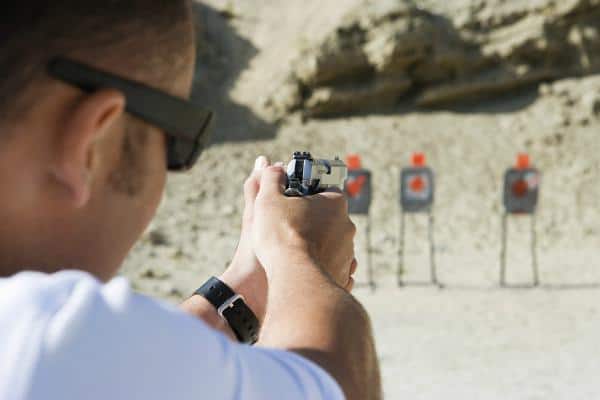
While all the sun related advice above is certainly important, the takeaway I’m focusing on here is how UV rays impact the eyes, and how to protect your eyes from damage.
When shopping for a new pair of shooting glasses, make sure that they are noted or marked as offering at least some level of UV protection. Obviously, if you only shoot indoors, that advice won’t apply.
Here are some frequently asked questions that I see and hear in regards to UV eye protection:
Are polarized shooting glasses and UV shooting glasses the same thing?
No they are not. Polarized shooting glasses feature a special coating that reduces the glare from the sun, but the polarization coating itself does not offer any UV protection. However, some polarized shooting glasses have UV protection integrated into the lenses in addition to the polarization.
Should shooting glasses be polarized and offer UV protection?
Personally, I prefer polarized shooting glasses over non-polarized models as I do most of my shooting outdoors. So, I prefer shooting glasses that are both polarized and offer complete UV protection.
However, if you predominately do your shooting indoors, then I’d skip the polarized models as they don;t really offer any benefit at an indoor range. Actually, I find polarized shooting glasses to be too dark for my tastes when shooting indoors under artificial light.
Shooting glasses that are both polarized and UV coated will be marked accordingly.

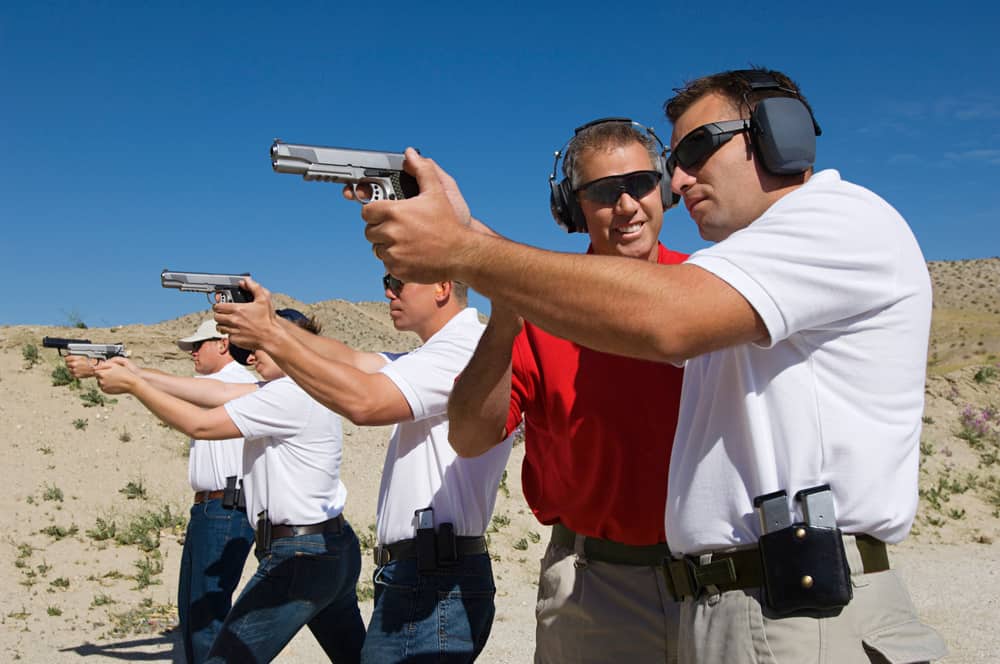
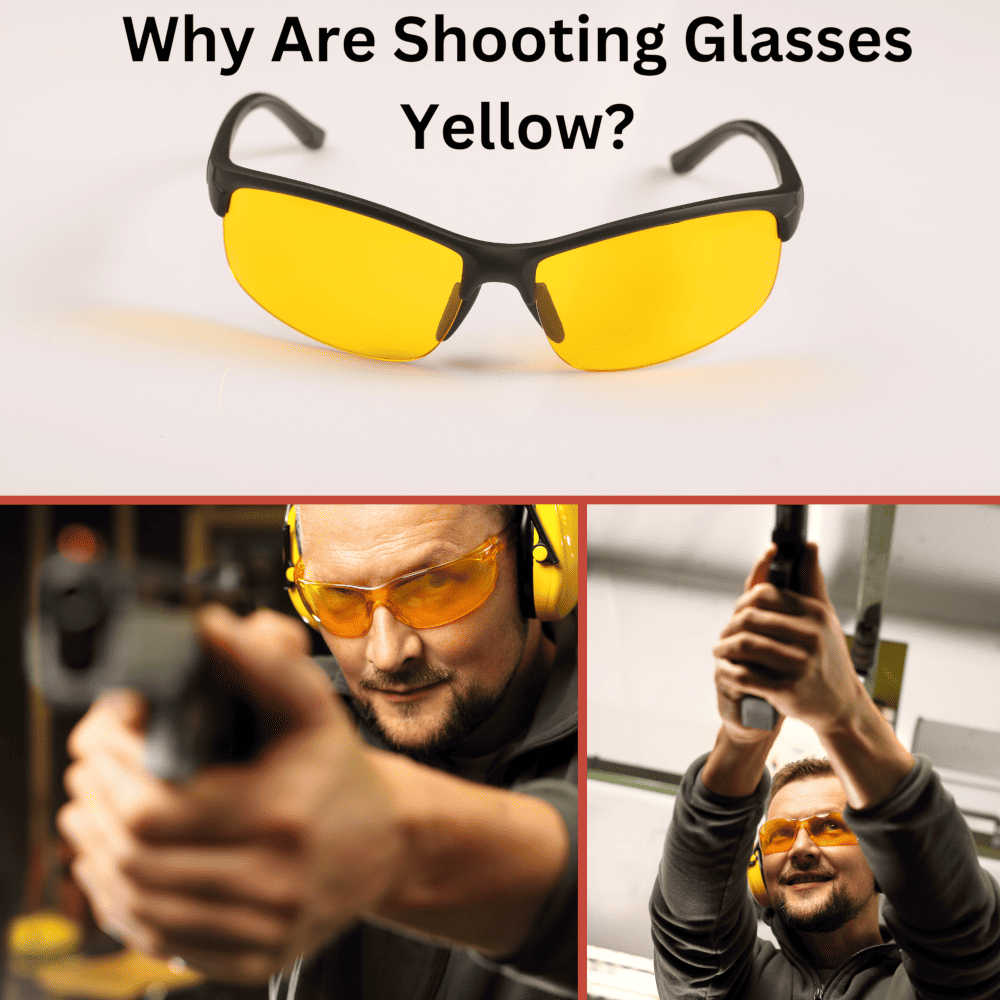
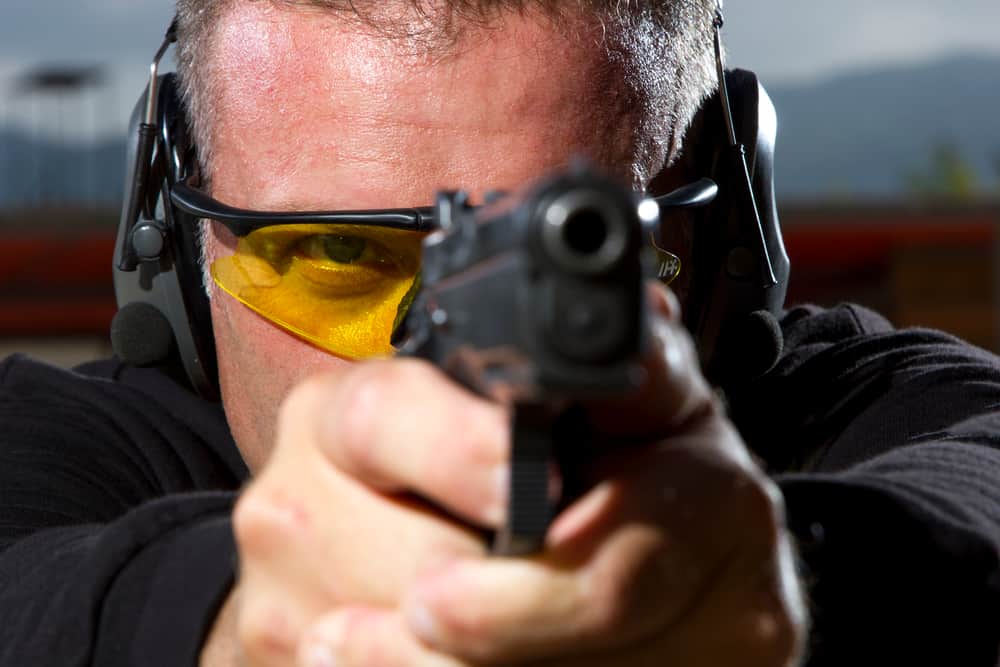
2 responses to “UV Protection for the Eyes”
[…] Any shooting glasses lens rating less than 99% or 400nm probably won’t provide adequate UV protection. It should be noted that even a clear Polycarbonate lens will block or absorb UV rays, so don’t become focused on the tint as playing a role in the level of protection. Here’s some more in-depth information about UV protection for the eyes. […]
[…] somewhat already discussed the importance of protecting your eyes from the ultraviolet rays of the sun in this article, so there’s no sense repeating it […]